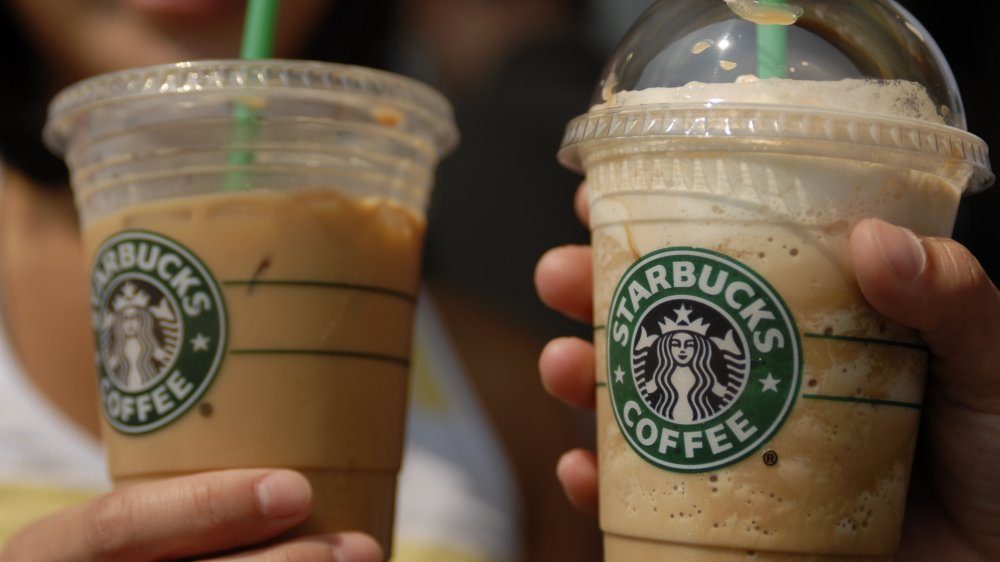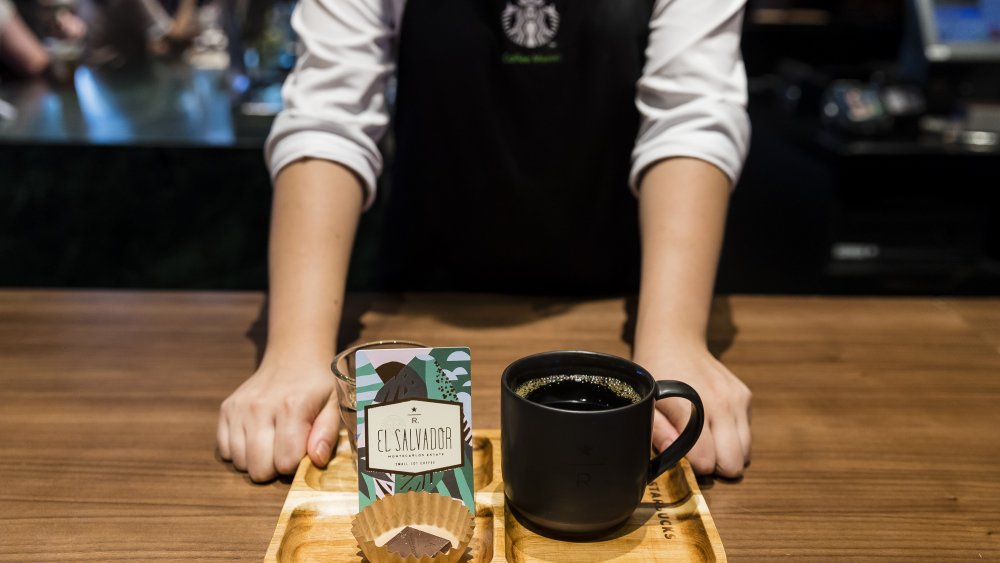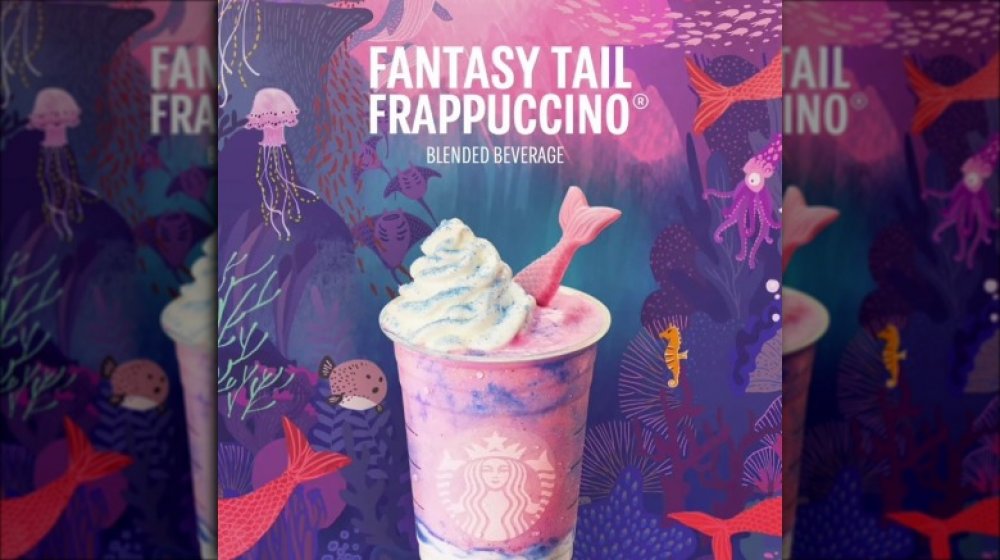The Sneaky Ways Starbucks Gets You To Spend More Money
Twenty years ago, the Harvard Business Review shouted out "The Starbucks Effect." Starbucks had brought "premiumness" to the world of coffee in the United States. We were, it seemed, willing to sell our firstborns' college funds Rumpelstiltskin-style to pay for it. In 2018, Shawn M. Carter wrote a confessional for CNBC epitomizing the phenomenon. His daily Starbucks habits cost him $2,3123.48 in a year, which, he pointed out, was "more than what 57 percent of Americans had saved in 2017." Carter vowed not to stop ordering his grande chai tea lattes with shots of blonde espresso. If national statistics are anything to go by, Carter isn't alone in his devotion. In 2019, Starbucks far outsold its competitors in the United States, raking in $21.4 billion (via Statista).
Starbucks has seduced us. Seventy-four percent of its profits came from drinks in 2018 and 2019 (via Starbucks). That's leagues above the 40 percent mark that Pete Baskerville — founder of 20 cafes and food businesses — told Forbes that other coffee shops should aspire to weekly. Starbucks achieves this by selling a lifestyle. The crux of its marketing strategy centers on making the chain a "third place." There's work, there's home, and there's Starbucks (via Business Insider). It's a place evoked magically by cradling a cup of your favorite Starbucks brew between your hands. Says Rox Brewer, Starbucks' America's group president, customers find "their third place ... everywhere they're holding our cup ... no matter their journey, after leaving our stores, that feeling of comfort stays with them."
How did they pull it off?
Starbucks makes its insides irresistible
Starbucks may have turned its cafes into a kind of second home to customers, but it's a home strategically designed to eat away at your pocketbook. The Starbucks experience begins when a barista writes your name on your favorite brew to get you on a first-name basis (via Marketing Week).
Starbucks is decorated to make you want to stay (via CNN). And, if you want proof that it succeeds, look no further than the Starbucks located at the CIA headquarters in Langley, Virginia. There (with the exception of hand-written names, which are security threat), the chain has designed a cafe that tricks even our country's top intelligence officials into staying a bit too long (via The Washington Post). Lines to get in can stretch down Langely's hallway. The leather armchairs, vanilla lattes, and lemon pound cakes have become go-to's for CIA operatives holding intra-agency job interviews. One of these leather armchairs may even be a place where the chief of the team that helped find Osama Bin Laden was recruited.
Comfortable chairs are just a part of the pie. Per Business Insider, there is nothing unintentional about Starbucks' layout. A prominent food display in the well-lit spot? Check. Small grab-and-go items placed strategically by the register? Check. Finally, maybe you've noticed that your favorite Starbucks cafe is continually moving around its armchairs and upgrading its wall art. This consistent redecorating invites your eyes to linger on new products — ones you never knew you wanted to buy.
How Starbuck uses triggers
Starbucks doesn't stop at seductively decorating its cafes. The company has become a pro at seduction in our personalized digital realities, too. How? By using what Business Insider calls "triggers": visual queues that make you long after the tastes, sounds, and smells of the mythical "third place" that Starbucks has created.
The mermaid filter on Snapchat is there to make you want a coffee. Are you still thirsting after Starbucks' sweet and sour Unicorn Frappuccino? That might be because, when it came out in 2017, it went viral (via The Virginian Pilot). Every time you thought "unicorn" you started thinking "Starbucks." The same goes for the "rainbow blends" that had Instagrammers Instagramming like it was no one's business (via Independent).
Lastly, as Business Insider pointed out, when it comes to loyalty cards, Starbucks hits it out of the park. Starbucks' version of a loyalty card is "Frappy Hour," a gamified app that rewards you with a free drink for about every 16 that you buy. The math is simple. According to Restaurant Business, as of 2018, 34 percent of us took loyalty or rewards programs into consideration when deciding which bakery-cafe to visit. And Starbucks' rewards programming is intimate, just like the names it writes on your lattes. It inundates your phone with personalized food and beverage offers that are incredibly hard to resist (via The Manifest).


